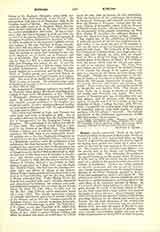

Kinloss (Gaelic ceann-loch, “head of the loch”) Cistercian abbey on the coast of Morayshire, Scotland, founded in 1150 or 1151 (authorities differ) by King David I, in gratitude, according to the popular legend, for having been guided into safety by a white dove when he had lost his way hunting in the adjacent forest. The monastery was colonized from Melrose, and the greater part of the church and buildings were erected before 1200. Pope Alexander III confirmed the royal foundation to the second abbot, Reinerius, in 1174; and by 1229 the abbey was in a position to send out a colony to the newly-founded monastery of Culross, in Perthshire. Kinloss was richly endowed by David’s successors, and also by private benefactors, among its possessions being the valuable salmonfishings on the River Findhorn, granted by Robert Bruce and confirmed by James I and James IV. The abbots were mitred, with a seat in Parliament, and the house had a special prominence and importance as the only abbey in the extensive province of Moray. In the autumn of 1303 King Edward I, while on his progress through the north of Scotland, stayed at Kinloss for three weeks with a large retinue, and received the fealty of Abbot Thomas. Abbot Chrystal (1504-1535) did much for the material welfare of the house, providing furniture for the church and books for the library; but the most illustrious of the twenty-four abbots who ruled the monastery was his successor, Robert Reid, who held the priory of Beauly in commendam, together with the Abbacy of Kinloss. This wise, learned, and excellent prelate was sent as the king’s commissioner to Henry VIII to treat for peace, and again to France in connection with the marriage of James V. He erected a new library and other buildings at his abbey, and carefully administered the property of the house. He became Bishop of Orkney in 1541, and his nephew Walter succeeded him as abbot. Walter conformed to Protestantism, and alienated most of the lands, which were erected into a temporal lordship in 1601 in favor of Edward Bruce, created Lord Bruce of Kinloss, a title still enjoyed by his descendant the Earl of Elgin, although the lands of Kin-loss were sold in 1643 to Brodie of Lethen, which family now owns them. Only a few fragments remain of the abbey buildings, including the west cloister wall, two fine Norman arches, and a two-storied building with groined roof, traditionally called the “prior’s chambers”. The church has entirely disappeared.
D. O. HUNTER-BLAIR

